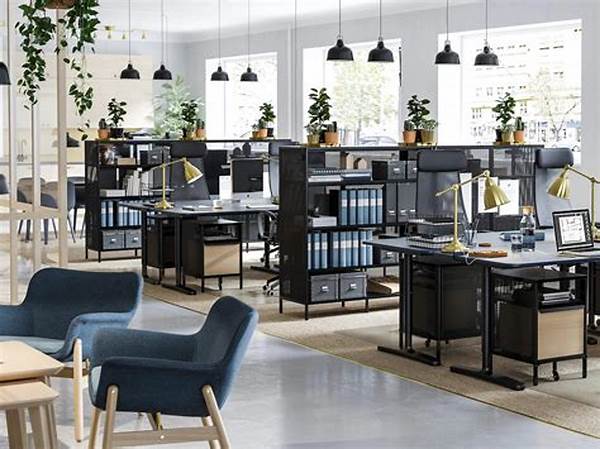Welcome to a world where Scandinavian simplicity meets Indonesian vibrancy—welcome to IKEA Indonesia. This renowned Swedish furniture giant has been transforming lives across the globe with its practical designs and wallet-friendly pricing, and its presence in Indonesia is another feather in its illustrious cap. Whether you’re furnishing a cozy Jakarta apartment or a sprawling Bali villa, IKEA brings you a plethora of choices designed to suit your lifestyle needs. So, why is IKEA Indonesia such a big deal, and what’s the magic formula behind its success?
Read More : How To Organize In Tight Corners Without Feeling Cluttered
First and foremost, IKEA’s unique selling point lies in its simple, yet elegant designs that prioritize functionality. Picture this: a modular sofa that morphs into a bed, perfect for last-minute sleepovers, or a minimalist desk that creates an illusion of space in compact urban homes. Such ingenious designs are more than just furniture; they are solutions to everyday living challenges that Indonesian households face. Combine that with the flat-pack model, which ensures affordability by cutting down logistics and shipping costs, and you’ve got a winning strategy. But wait, there’s more to IKEA Indonesia than meets the eye.
One might wonder if IKEA’s Swedish-inspired products resonate with Indonesian culture, which is rich in textures, colors, and traditional motifs. The company tackles this challenge by embracing local uniqueness. Collaborating with Indonesian artisans, IKEA brings local flavors into its designs, crafting collections that pay homage to Indonesia’s cultural heritage. How cool is that? Imagine a Swedish cabinet adorned with Batik patterns or a Javanese-inspired rattan chair that blends seamlessly in your modern dining room! Their inventory shows how IKEA Indonesia perfectly marries global appeal with local sensibilities.
The IKEA Indonesia Experience
IKEA Indonesia isn’t just about buying furniture; it’s an experience. From playrooms for kids to interactive showrooms showcasing different home settings, IKEA turns furniture shopping into a family adventure. Add to that the famous Swedish meatballs and local Indonesian dishes at the IKEA restaurant, and you’re not just shopping; you’re savoring a multi-sensory experience. The place feels like a theme park for adults and kids alike!
Moving on, IKEA Indonesia has raised the bar with its commitment to sustainability. With initiatives focused on renewable energy, waste minimization, and sustainable sourcing, the company is leading the charge for green practices in Indonesia’s retail sector. Customers not only get eco-friendly products but also join in a broader mission to save the planet. Now, isn’t that a shopping experience worth investing in?
In the fast-changing retail landscape, innovation is key to staying relevant, and IKEA Indonesia isn’t resting on its laurels. Plans are in the works to expand digital touchpoints, making online shopping as immersive as the in-store experience. Virtual reality showrooms, interactive apps, and seamless mobile platforms aim to bring IKEA’s universe to your fingertips.
IKEA’s impact on Indonesia has only just begun. With plans to expand further into the archipelago, opening more stores and enhancing their online services, IKEA aims to be an integral part of Indonesian homes while boosting local economies by creating jobs and supporting community projects.
Customer Testimonials: Voices of IKEA Indonesia
A Satisfied Customer’s Perspective”Who knew furniture shopping could be this fun? IKEA Indonesia has changed how we think about decorating our home. We’ve transformed our small city apartment into a cozy yet stylish living space. And the best part? It didn’t break the bank!”—Maria, a happy IKEA customer in Jakarta.
Conclusion: The IKEA Indonesia Advantage
In summary, IKEA Indonesia has successfully captured the hearts of Indonesian consumers by delivering high-quality, affordable, and culturally resonant products. The company’s blend of international design and local influences, along with its focus on sustainability and innovation, makes it a frontrunner in the competitive retail landscape. For anyone looking to revamp their living spaces or experience delightful retail therapy, IKEA Indonesia is the ultimate destination.
—
Now, let’s explore more facets of IKEA Indonesia through structured discourses, informative content, and deeper insights.
—
Starting with a modest vision of ‘creating a better everyday life,’ IKEA has grown exponentially since its inception in 1943, making its Indonesian debut a substantial milestone. For many Indonesians, IKEA offers more than just furniture; it provides a lifestyle—a seamless blend of functionality, affordability, and style. It’s fascinating to see how this brand has become emblematic of minimalist living while resonating deeply with local lifestyles.
In the vibrant, bustling cities of Indonesia, space is often a luxury. IKEA’s expertise in offering smart, space-saving solutions addresses these challenges, making it a go-to choice for urban dwellers. Imagine transforming a small bedroom into a multifunctional space, all thanks to IKEA’s innovative products. It’s no wonder that when people think of home solutions, IKEA Indonesia is often the first name that pops into mind.
The Impact of IKEA’s Entry into Indonesia
IKEA’s arrival in Indonesia marked a new era for retail shopping. It wasn’t just about being a store but a destination where families and design enthusiasts could discover endless possibilities. The company’s strategy was clear: resonate with the local culture while maintaining international standards. Visiting one of their massive stores is like taking a day trip; there’s much to see, do, and, of course, eat!
The international giant didn’t merely import its products; it adapted to local tastes, ensuring its offerings would suit Indonesian homes. With products specifically tailored to meet local needs, including tropical-friendly materials and space-efficient designs, IKEA has disrupted traditional furniture retail. But beyond furniture, the brand has woven itself into the fabric of local communities, fostering educational programs and sustainable practices.


